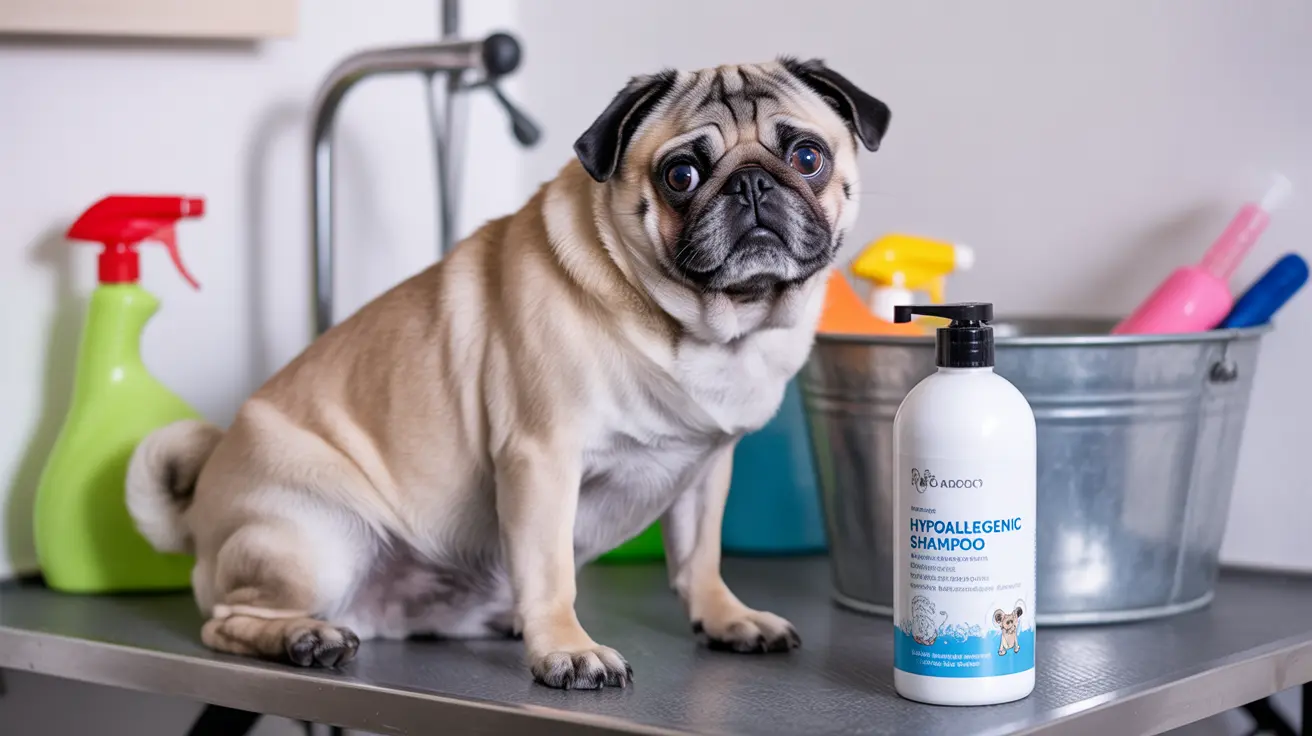If you're considering adding a Pug to your family but have allergies, you might be wondering whether these adorable, wrinkly-faced dogs are hypoallergenic. The short answer is no - Pugs are not hypoallergenic dogs. In fact, they can be particularly challenging for allergy sufferers due to their unique characteristics.
Let's explore why Pugs aren't hypoallergenic and what this means for potential pet parents with allergies.
Understanding Why Pugs Aren't Hypoallergenic
Pugs possess several characteristics that make them significant allergen producers:
First, they have a double coat that sheds year-round, releasing dander (dead skin cells) into the environment. This dander is the primary trigger for pet allergies, not the fur itself. Additionally, their distinctive facial wrinkles can trap allergens, including saliva, dander, and environmental particles.
Unlike breeds considered more hypoallergenic, such as Poodles or Maltese dogs, Pugs cannot retain most of their dander within their coat. Instead, it freely disperses into their environment, increasing exposure for allergy-sensitive individuals.
Managing Life with a Pug When You Have Allergies
While Pugs aren't hypoallergenic, there are several effective strategies to minimize allergen exposure:
Regular Grooming Routine
- Brush your Pug outdoors daily to remove loose fur and dander
- Weekly baths with pet-friendly, hypoallergenic shampoo
- Clean facial folds daily to prevent allergen accumulation
Home Management Strategies
- Install HEPA air purifiers in main living areas
- Vacuum daily with a HEPA-filtered vacuum cleaner
- Wash pet bedding weekly in hot water
- Keep bedroom areas pet-free
- Use washable slipcovers on furniture
Signs of Allergic Reactions to Pugs
Common symptoms of dog allergies include:
- Sneezing and runny nose
- Itchy, watery eyes
- Coughing or wheezing
- Skin rashes or hives
- Difficulty breathing
- Asthma symptoms
Alternative Options for Allergy Sufferers
If you discover that a Pug's allergen levels are too high for your comfort, consider these more hypoallergenic breeds:
- Poodles (all sizes)
- Bichon Frises
- Portuguese Water Dogs
- Maltese
- Yorkshire Terriers
Frequently Asked Questions
Why are Pugs not considered hypoallergenic dogs?
Pugs are not hypoallergenic because they have a double coat that sheds extensively, producing significant amounts of dander (dead skin cells). Their wrinkled skin and facial folds can also trap allergens, making them more likely to cause allergic reactions.
How can I manage allergies if I have a Pug at home?
Manage Pug allergies through regular grooming, frequent house cleaning with HEPA-filtered vacuums, using air purifiers, keeping certain rooms Pug-free, and consulting with an allergist about medications or immunotherapy options.
What are the best ways to reduce dander and allergens from a Pug?
Reduce Pug dander through daily brushing (outdoors), weekly baths, regular cleaning of facial folds, frequent vacuuming, and maintaining a clean living environment with air purifiers and washable furniture covers.
Can my Pug develop allergies, and what are the symptoms?
Yes, Pugs can develop allergies to food, environmental factors, or fleas. Symptoms include excessive scratching, red or irritated skin, hot spots, recurring ear infections, and gastrointestinal issues in food allergy cases.
Are there any hypoallergenic dog breeds that might be a better choice than Pugs for allergy sufferers?
Yes, several breeds are better suited for allergy sufferers, including Poodles, Bichon Frises, Portuguese Water Dogs, and Maltese. These breeds have hair instead of fur and shed minimally, producing fewer allergens than Pugs.
Conclusion
While Pugs make wonderful, loving companions, they are not hypoallergenic and may not be the best choice for individuals with severe pet allergies. If you're determined to share your life with a Pug despite having allergies, implementing strict grooming and cleaning routines can help manage symptoms. However, spending time with a Pug before making a long-term commitment is crucial to ensure your allergies are manageable.






